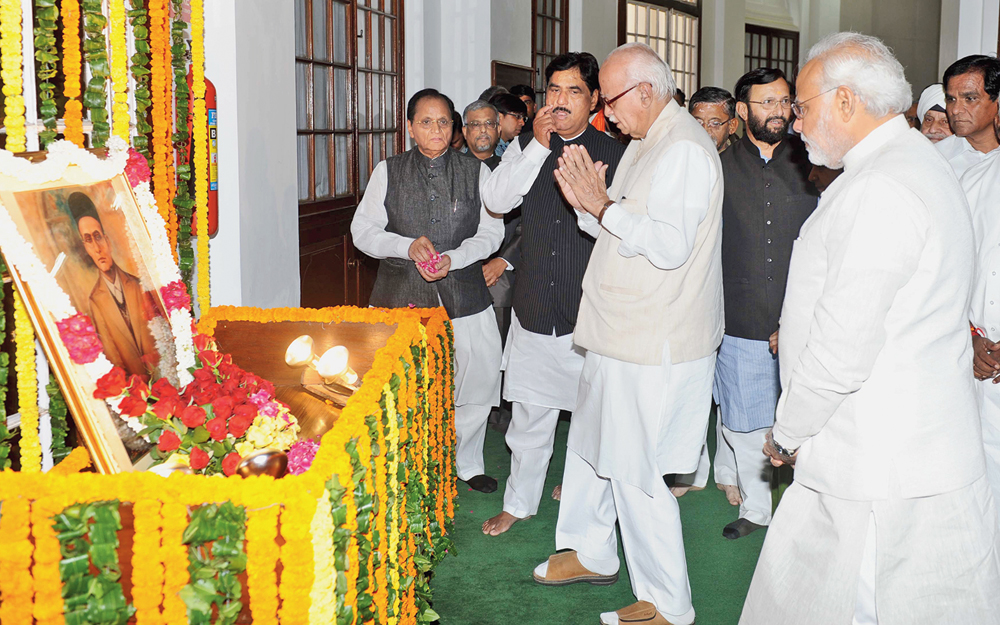Ever since the 2014 general elections, especially after the 2019 victory of the Narendra Modi-led Bharatiya Janata Party, there is a perception that India is shifting rather swiftly towards the Right in ideology. And the shift seems irreversible. This hope or fear of irreversibility is what should encourage us to be curious about the history of the Indian Right and the way it worked over the years. In this book, the author, a veteran journalist, uses the lives of key political figures as the lens to formulate how the ideological shift happened. The people whose lives are examined and analysed here are Keshav Baliram Hegdewar, V. D. Savarkar, Madhav S. Golwalkar, Syama Prasad Mookerjee, Deendayal Upadhyaya, Balasaheb Deoras, Vijaya Raje Scindia, Atal Bihari Vajpayee, Lal Krishna Advani, Ashok Singhal and Bal Thackeray.
I would like to preface my comment with two small observations. If this list represents the Indian Right, it should have included people from all religious backgrounds, Hindus and non-Hindus alike, but it has only people of the Hindu heritage making the case for a Hindu Nation. The most appropriate description, therefore, should have been the Hindu Right, not the Indian Right as the subtitle claims. Second, it is now clear, and future historians would definitely argue this, that the most prominent player in shaping the Hindu Right ideology by State power is Narendra Modi. His total impact on India is yet to be fully assessed, and is still unfolding. But if there is a deep sense of irreversibility about India’s ideological shift, the credit for it goes mainly to Modi, and also to Amit Shah. Chapters on these two political figures would have given a more comprehensive portrait of the Hindu Right in India. Nonetheless, this is a brilliant collection of narratives of people of varied backgrounds who shaped the Hindutva ideology over the years.
These people worked with different organizations such as the Hindu Mahasabha, the Bharatiya Jana Sangh, the Bharatiya Janata Party, the Shiv Sena and the Vishwa Hindu Parishad. But the main organization that matters in presenting an overarching vision of Hindutva has been the Rashtriya Swayamsevak Sangh. Each of the organizations has some direct or indirect association with the RSS barring perhaps Bal Thackeray, who founded the Shiv Sena, although he endorsed its ideological position, and that was the reason for the Shiv Sena’s alliance with the BJP in Maharashtra politics. We learn that what Thackeray shared was “revulsion for the minority community (Muslims) with the RSS”, but what perhaps worked as a bigger cause that showed solidarity was the Ayodhya movement. Other than that, we do not come across any close relationship of the RSS with the Shiv Sainiks. The story of Ashok Singhal is very different though.
The author presents a detailed story of the lives of the leaders he has chosen and discusses how politics and the strategies of the time shaped their worldviews and also the thinking of the Hindu Right. The chapters on Syama Prasad Mookerjee and V.D. Savarkar are of particular interest. We learn how Mookerjee moved from a moderate to a firebrand Hindu Right leader on his own, although Savarkar did play a role in shaping his mind. Few know that Mookerjee was a member of Fazlul Huq’s government in Bengal during colonial times and enjoyed a great rapport with him.
For Modi, the person who matters most is Deendayal Upadhyaya, who he often quotes in his speeches. The author presents an interesting portrait of this leader who had an unfortunate death, and the impact of Upadhyaya’s work and ideas perhaps would be more relevant in the Modi era.
Interestingly, there is an increasing number of books coming out on these figures — mostly by writers who are sympathetic to the Hindu Right cause. These new publications are more hagiographies than objective biographies. This is natural because this is their season, but scholars should be a little careful while reading these works. For objective readings of Indian politics, we need scientific evaluations of these personalities and their lives. The book under review provides a good entry point for such a pursuit. Anyone interested in knowing how India has shifted to Rightward, and how secularism has been challenged in spite of being present in India’s Constitution, will find this book indispensable.
The RSS: Icons of the Indian Right by Nilanjan Mukhopadhyay, Tranquebar, Rs 799











